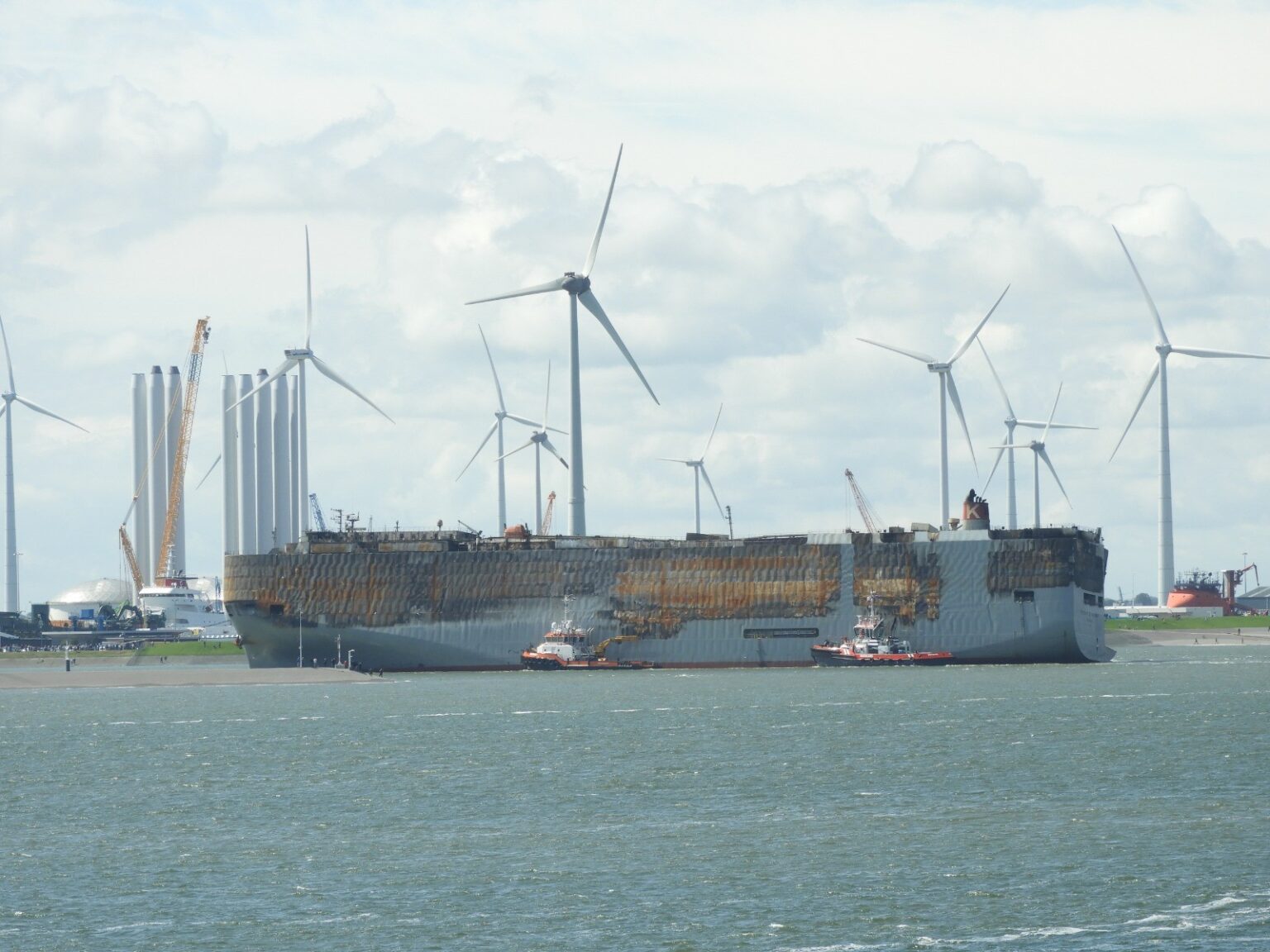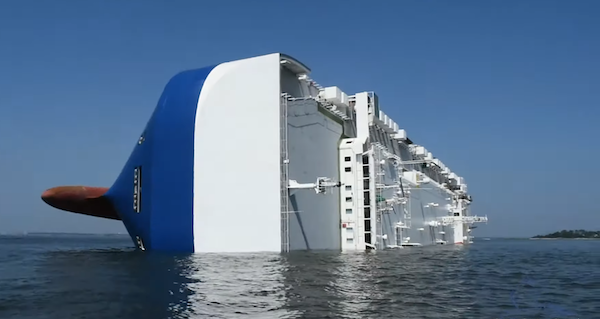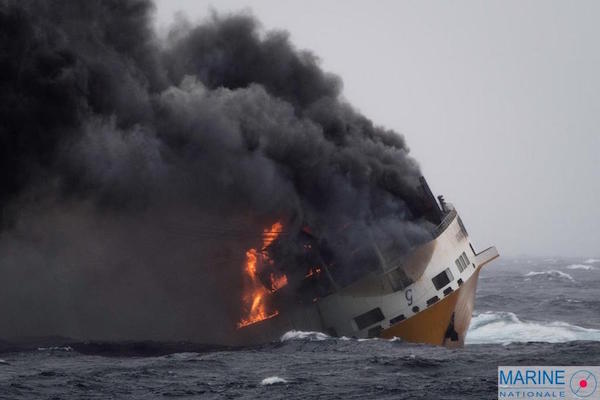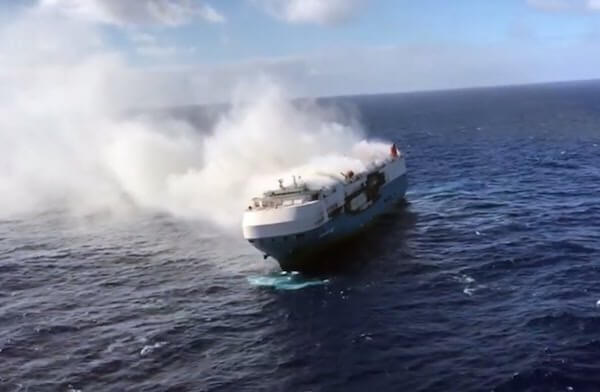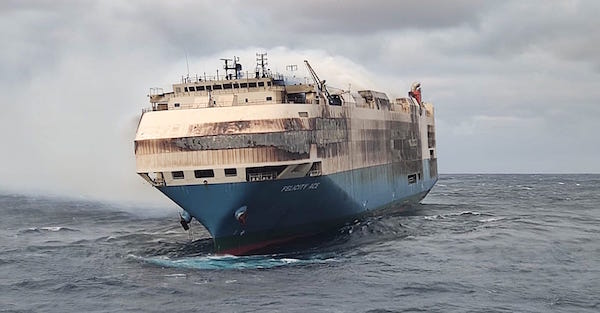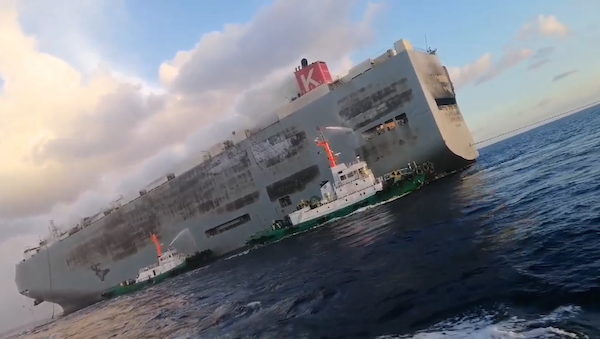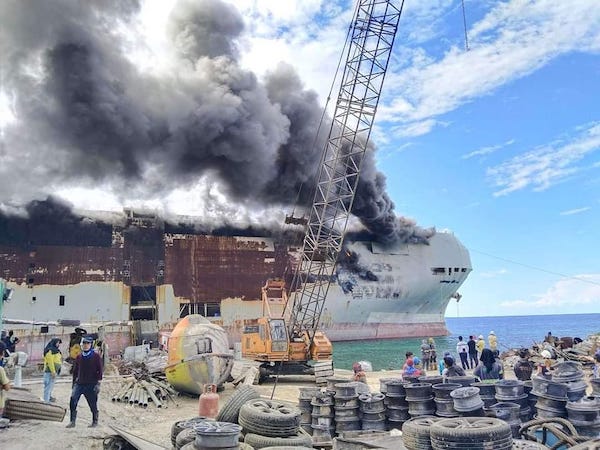The Fremantle Highway caught fire around midnight on July 25, 2023 in the North Sea. She had departed Bremerhaven, Germany and was bound for Singapore. She was carrying 3783 cars, including BMWs, Mercedes and Rolls-Royces. When the fire broke out, the Fremantle Highway was in the midst of heavy maritime traffic and close to the Wadden Islands, famous for their exceptional biodiversity. The evacuation of the 23 crew members, including 21 Indians, turned out very badly (1 fatality and 7 injured). The Fremantle Highway was towed to the port of Eemshaven in the Netherlands, and docked 9 days after the blaze started. The fire has been declared extinguished, but the Fremantle Highway was carrying 498 electric cars, and cobalt and lithium battery fires can be prone to unexpected resumption.
Robin des Bois applauds the expertise of the rescuers from the Netherlands-based company Smit and the cohesion of the State services that enabled the ship to avoid sinking and find a port of refuge. This is an example to follow for the United Kingdom, Norway and the countries of the European Union bordering the North Atlantic, the Baltic, the Mediterranean and the Black Sea.
Car carriers are globetrotters that carry new and used cars, military vehicles and public works machinery all over the World Ocean. They are interested in anything on wheels. Like all other types of merchant ship, they have a pathological attachment to supersizing and to the economic principle of “the more you carry, the less it costs”, which also applies to livestock carriers and cruise ships. The Fremantle Highway had a carrying capacity of 6,000 standard vehicles.
Because of their air draught and stacked garage decks, car carriers have always been precarious with regard gusts of wind and spreading fires. Docked car carriers are subject to broken moorings and collisions with cranes or other cargo ships. Capsizings, groundings and partial or total fires involving car carriers are numerous, harmful to the environment and costly for insurers. The on-the-spot dismantling of the Golden Ray, which capsized and then caught fire just outside a port in Georgia, USA, with 4,200 cars on board, took 2 years and cost over a billion US$. Shipwrecks at depths of 2,000 to 3,000 meters create polluted underwater sites, landfills for end-of-life vehicles (ELVs), from which fuel oil, gasoline and toxic waste spill for years and decades.
“Shipbreaking”, Robin des Bois’ quarterly bulletin on the demolition of merchant ships and military vessels published since 2006, notes an increasing number of car carrier casualties since 2018. The series is long, with the Auto Banner, the Baltic Breeze, the Sincerity Ace, the Grande America, the Grande Europa, the Diamond Highway (operated by K-Line, the operator of the Fremantle Highway), the Golden Ray, the Hoegh Xiamen.
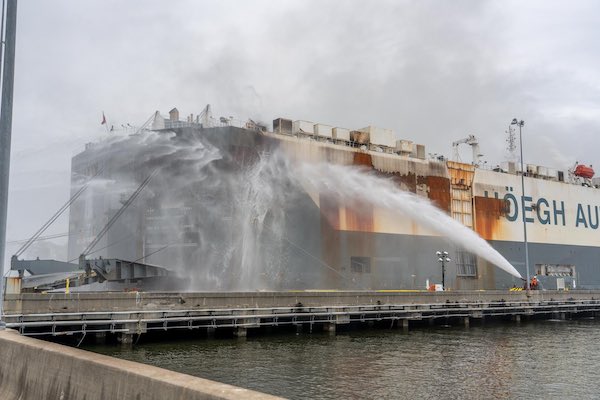
Hoegh Xiamen, June 2020, 3 days after the fire started, Jacksonville (Florida, USA)
© Jacksonville Fire and Rescue Department
The Covid-19 pandemic paralyzed shipping and international trade in 2021, and there was a slowdown in car carrier accidents. But since 2022, the string of misfortunes has resumed with even greater intensity, with the sinking of the Serasi I and the Felicity Ace, and the fires on board the Grande Costa d’Avorio, the Ah Shin and the Fremantle Highway.
The Fremantle Highway is scheduled to remain at Eemshaven until October 14. In fact, unloading the car wrecks, the debris and waste from the fire, the red-hot residues from battery packs, and pumping out the 2,000 tons of fuel and diesel oil could take more than two and a half months.
Then will come shipbreaking time. Until now, burnt-out car carriers have been towed to yards in the Indian subcontinent and Turkey, wherever the damage occurred, except when the precariousness of the wreck enabled only a short distance towage and imposed a nearby demolition. This was how the City of Berytus, which suffered a fire in 2009 in the port of Antwerp, was scrapped in Ghent. Robin des Bois hopes that, in line with the EU ship recycling strategy and common sense, the Fremantle Highway will be broken up in a local yard offering maximum guarantees for workers and the environment.
 Imprimer cet article
Imprimer cet article





